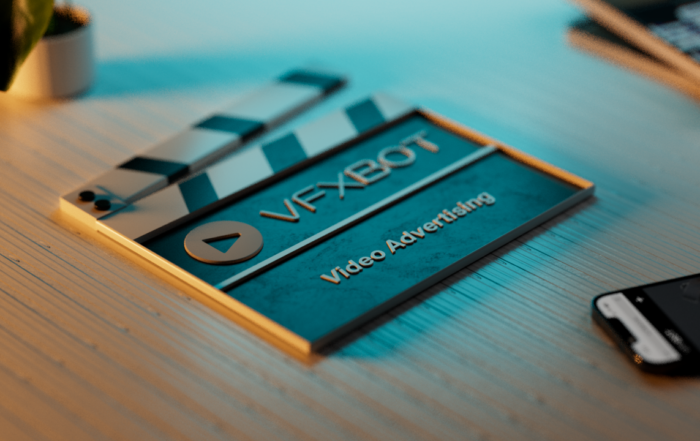Zero-budget marketing, also known as zero-dollar marketing or zero-cost marketing, refers to the practice of promoting a product, service, or brand with little to no financial expenditure on advertising or promotional activities. This approach therefore relies on creative, low-cost, or no-cost strategies to reach and engage with the target audience. Hence, zero-budget marketing is often used by startups, small businesses, or individuals with limited financial resources.

Table of Contents
What is Free Marketing?
Free marketing, also known as “organic marketing” or “earned marketing,” refers to the promotion of a product, service, or brand through strategies and channels that do not require direct financial investment in advertising or promotional activities. Instead, it relies on non-paid methods to reach and engage with the target audience. Free marketing methods can thereby leverage creativity, content, and social interactions to generate interest, build brand awareness, and drive customer engagement.
Free Marketing Trends
As marketing trends continue to evolve, free marketing strategies also adapt to new technologies, consumer behaviors, and industry developments. Hence, here are some of the current free marketing trends to consider:
Content Personalization
Personalizing content for your audience is becoming increasingly important. In addition, use data and insights to tailor your content to the preferences, needs, and behaviors of your target audience. Personalized content is more likely to resonate and engage.
Video Content
Video marketing remains a powerful trend. Moreover, platforms like YouTube, TikTok, and Instagram Reels offer opportunities to create and share short, engaging videos. Live streaming on platforms like Facebook Live and Instagram Live also provides real-time interaction with your audience. VFXBOT creates some useful video content for products and services for marketing purposes.
User-Generated Content (UGC)
Encourage your customers to create content related to your brand or products. UGC, such as customer reviews, testimonials, and social media posts, can hence build trust and authenticity.
Social Commerce
Many social media platforms are integrating shopping features, allowing users to make purchases without leaving the app. In addition, utilize these features to sell products directly through your social media profiles.
Voice Search Optimization
With the growing popularity of voice-activated devices and virtual assistants like Siri and Alexa, optimizing your content for voice search is essential. Moreso, focus on long-tail keywords and natural language.
Interactive Content
Interactive content, such as polls, quizzes, surveys, and interactive infographics, engages users and encourages participation. Therefore, it can be shared more widely on social media.
Micro-Moments
Capitalize on micro-moments when people turn to their devices for quick answers. Also, provide helpful, concise, and relevant information in these moments to capture user attention.
Local SEO
Optimize your online presence for local search by claiming and optimizing your Google My Business listing. Moreover, respond to reviews, provide accurate business information, and use local keywords.
Social Media Stories
Stories on platforms like Instagram, Facebook, and Snapchat provide a temporary but engaging way to share content, promotions, and behind-the-scenes glimpses of your brand.
Email Automation
Use email marketing automation to send targeted messages based on user behavior and preferences. This can therefore improve engagement and conversion rates.
Sustainability and Social Responsibility
Consumers are increasingly interested in brands that align with social and environmental causes. Also, highlight your commitment to sustainability and corporate social responsibility in your marketing efforts.
Chatbots and AI
Implement chatbots on your website or social media to provide instant responses to customer inquiries. Moreover, AI-driven personalization can enhance user experiences.
Inclusivity and Diversity
Embrace inclusivity and diversity in your marketing materials and campaigns. In addition, reflect the diversity of your audience in your visuals and messaging.
Content Syndication
Share your content on various platforms and channels to reach a wider audience. Therefore, guest posting on industry-related blogs and websites can also expand your reach.
Storytelling
Craft compelling brand stories that resonate with your audience. Moreover, stories are memorable and help create an emotional connection with consumers.
Remember that the effectiveness of these trends may vary depending on your industry, target audience, and specific goals. It’s hence essential to continually assess the performance of your free marketing efforts and adjust your strategy accordingly to therefore stay relevant and effective in the ever-changing marketing landscape.
Best Practices for Free Marketing
Marketing a product or service with zero budget can be challenging, but it’s not impossible. Here are some creative and cost-effective strategies to help you market your offering:
1. Leverage Social Media: Social media platforms are powerful tools for marketing, and they’re free to use. Moreover, create profiles on platforms where your target audience is active. Share engaging content, interact with your followers, and use relevant hashtags to increase your reach. Consistency and authenticity are key.
2. Content Marketing: Start a blog or create valuable content that addresses the needs and interests of your target audience. In addition, share this content on your website and social media. Over time, this can help establish you as an authority in your niche.
3. Email Marketing: Build an email list by offering something of value, like a free eBook or a newsletter. Also, regularly send informative and engaging emails to your subscribers, therefore showcasing your product or service when relevant.
4. Networking: Attend industry-related events, conferences, and webinars. In addition, connect with potential customers and partners. Also, building relationships can lead to word-of-mouth marketing, which is very effective.
5. Collaborations and Partnerships: Partner with other businesses or influencers in your niche. Moreover, you can co-host webinars, share each other’s content, or run joint promotions. This allows you to tap into each other’s audiences.
6. User-Generated Content: Encourage your existing customers to share their experiences with your product or service. Also, you can create a hashtag specific to your brand and ask customers to use it when posting reviews or photos related to your offering.
7. Online Communities: Participate in online forums, groups, and communities where your target audience hangs out. Moreover, provide helpful advice and subtly mention your product or service when relevant.
8. Guerrilla Marketing: Get creative with low-cost, attention-grabbing stunts or events in your local area. Guerrilla marketing can generate buzz and social media coverage.
9. DIY PR: Write and distribute press releases to local media outlets and relevant industry blogs. In addition, share newsworthy updates about your product or service, such as product launches or milestones.
10. SEO (Search Engine Optimization): Optimize your website and content for search engines. This can therefore help your website rank higher in search results, increasing organic traffic.
11. Free Trials or Samples: If feasible, offer free trials or samples of your product or service. Also, people are more likely to try something when there’s no risk involved.
12. Word of Mouth: Encourage satisfied customers to refer friends and family. In addition, consider implementing a referral program where customers receive a reward for successful referrals.
13. Local Marketing: If your target audience is local, utilize local advertising options like community bulletin boards, flyers, and partnerships with local businesses.
14. DIY Graphic Design: Create eye-catching visuals and graphics for your marketing materials using free or low-cost design tools like Canva.
15. Analyze and Adapt: Continuously monitor the performance of your marketing efforts. Moreover, use free analytics tools to track website traffic, social media engagement, and email open rates. Also, adjust your strategies based on what works best.
Remember that marketing with a zero budget often requires more time and effort, but it’s possible to build a presence and thereby attract customers over time. Hence, be patient, stay consistent, and be open to learning and adapting as you go.
Some Free AI Marketing Tools
Google Analytics provides valuable insights into website traffic, user behavior, and conversion rates. In addition, while it’s not strictly an AI tool, it offers some AI-driven features like predictive analytics and audience segmentation.
Google Optimize allows you to run A/B tests and personalize your website content. Also, it uses machine learning to help you determine which variations of your website elements perform better.
Google Data Studio enables you to create custom, interactive reports and dashboards. Hence, while not a pure AI tool, it can help you visualize and analyze data for marketing purposes.
Facebook Insights provides data and analytics on your Facebook Page’s performance. Also, it includes audience demographics, engagement metrics, and other valuable information for social media marketing.
Facebook Analytics offers deeper insights into your audience’s behavior across Facebook and your website. Moreover, it helps you understand the customer journey and can be used for marketing optimization.
Facebook Chatbots (Messenger Platform)
Facebook offers a platform for building chatbots on Messenger. Also, while not entirely AI, you can create automated responses to engage with customers.
Twitter Analytics provides data on your tweet performance, audience engagement, and follower demographics. It can therefore help you refine your Twitter marketing strategy.
Canva is a design tool that offers a free version with AI-driven features like a color palette generator, logo maker, and design templates for social media and marketing materials.
Mailchimp offers a free plan for email marketing. Moreover, while not strictly an AI tool, it uses predictive analytics to help you send emails at optimal times and target your audience effectively.
Keyword Surfer is a Chrome extension that provides keyword research data directly in Google search results. In addition, it can help you identify high-ranking keywords for SEO.
Wordtune is a writing assistant that uses AI to suggest improvements to your writing. Also, it’s available as a free Chrome extension and can help you craft more compelling marketing copy.
AnswerThePublic helps you discover questions and topics that people are searching for online. Moreover, it can be a valuable resource for content ideas and SEO optimization.
While not a fully functional AI marketing tool, OpenAI’s GPT-3 Playground allows you to experiment with natural language generation. You can use it to draft marketing content ideas.
The Future of Free Marketing
The future of free marketing is likely to evolve alongside advancements in technology, changes in consumer behavior, and shifts in the marketing landscape. Here are some potential trends and developments that could shape the future of free marketing:
Content Quality and Personalization
High-quality, personalized content will continue to be essential. Therefore, AI-driven personalization tools will become more sophisticated, enabling marketers to deliver highly relevant content to individual users.
User-Generated Content (UGC)
UGC will remain a powerful free marketing tool. Brands will hence increasingly encourage customers to create and share content related to their products or services, leveraging the authenticity and trust associated with UGC.
Voice Search Optimization
With the growing popularity of voice-activated devices and virtual assistants, optimizing content for voice search will become crucial for free marketing strategies.
Video Dominance
Video content will continue to dominate. Moreover, short-form video platforms like TikTok and Instagram Reels will gain prominence, and live streaming will become more common for engaging with audiences in real-time.
Influencer Partnerships
Collaborating with influencers will remain a viable strategy for free marketing. Also, brands will seek partnerships with micro-influencers who have highly engaged, niche audiences.
Data Privacy and Trust
As concerns about data privacy grow, marketers will need to be transparent about data usage and prioritize building trust with their audience.
Sustainability and Social Responsibility
Consumers are increasingly interested in brands that align with social and environmental causes. Moreso, demonstrating a commitment to sustainability and social responsibility will be part of effective free marketing.
Augmented Reality (AR) and Virtual Reality (VR)
AR and VR technologies will find applications in free marketing, offering immersive and interactive experiences for users.
Chatbots and Conversational Marketing
Chatbots and virtual assistants will play a larger role in free marketing by automating customer interactions and providing personalized recommendations.
AI-Generated Content
AI tools that generate written content, graphics, and even videos will become more prevalent, assisting marketers in content creation and optimization.
Local SEO and Micro-Moments
As consumers increasingly rely on mobile devices, optimizing for local search and micro-moments (quick, immediate needs) will hence be essential for businesses targeting local audiences.
Measurement and Analytics
Advanced analytics tools will provide deeper insights into user behavior, thereby allowing marketers to make more informed decisions and refine their strategies.
Interactive and Shoppable Content
Interactive content, such as polls, quizzes, and shoppable posts, will become more common as marketers seek to engage users directly and drive conversions.
Blockchain for Transparency
Blockchain technology may be used to enhance transparency in marketing campaigns, particularly in areas like influencer marketing and ad verification.
Niche Communities and Micro-Targeting
Marketers will increasingly focus on niche communities and micro-targeting to connect with highly specific audience segments.
In addition, it’s important to note that the landscape of free marketing will continue to evolve, and what works best for one business or audience may differ from another. Also, staying informed about emerging trends, experimenting with new strategies, and thereby adapting to changes will be essential for success in the future of free marketing.
Conclusion
In summary, free marketing, also known as organic or earned marketing, is therefore a cost-effective strategy that relies on digital channels, content creation, and personalized engagement to promote products or services. It emphasizes the following key points:
Digital Focus
Free marketing primarily takes place in the digital realm, utilizing platforms like social media, content marketing, email, and SEO.
Content Quality
High-quality, valuable content is central to many free marketing approaches, hence, helping address audience needs and interests.
Personalization
Tailoring marketing efforts to individual preferences and behaviors thereby enhances engagement and conversions.
Data Analysis
Even in free marketing, data analysis is vital for monitoring performance, therefore making informed decisions, and refining strategies.
User Engagement
Moreover, encouraging user-generated content, active social media engagement, and community participation builds brand awareness and trust.
Experimentation
Also, free marketing often requires experimentation to find what works best for your unique audience.
Combination with Paid Marketing
Combining free marketing with paid advertising can thereby extend your reach and impact.
Patience and Persistence
Moreover, free marketing takes time to yield significant results, requiring patience and persistence for long-term growth.
ROI Measurement
In addition, even without a direct financial investment, measuring the return on investment is crucial to assess how strategies contribute to business goals.
Staying Informed
Staying updated on marketing trends, tools, and technologies is therefore essential to remain competitive in the digital marketing landscape.
Recent Posts
The Ultimate Guide to AI Video Advertising
This Ultimate Guide to AI Video Advertising will explore the various aspects of marketing[...]
Mastering the Art of Product Video Advertising
This detailed guide will take you through the various aspects of Product Video Advertising. As[...]
10 Incredible Benefits of Video Advertising
Any competent business owner or marketer will agree that video advertising is the ultimate tool[...]



